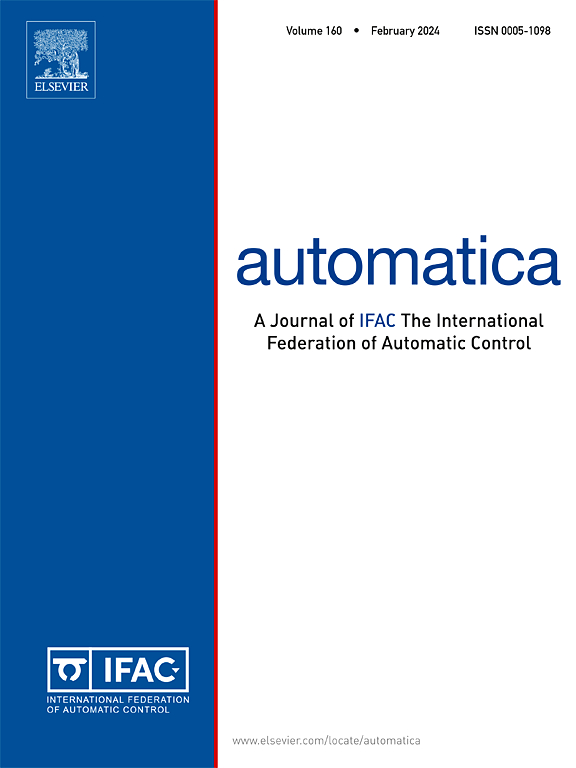网络化竞争多病毒SIR模型的分析、状态估计与控制
IF 5.9
2区 计算机科学
Q1 AUTOMATION & CONTROL SYSTEMS
引用次数: 0
摘要
本文提出了一种新的离散时间多病毒易感-感染-恢复(SIR)模型,该模型捕获了种群网络中竞争流行病的传播。首先,我们提供了网络模型上所有病毒的感染水平在指数时间内收敛于零的充分条件。其次,我们提出了一个观察模型,该模型捕获了每个节点中所有病毒感染水平的总和,它代表了感染不同病毒但具有相似症状的个体。第三,我们给出了模型是强局部可观察的充分条件,但不是必要条件,并且,假设网络中只有感染或恢复的个体,我们给出了模型是强局部可观察的充分必要条件。证明了该估计量的估计误差随观测器增益渐近收敛于零。最后,我们提出了一种分布式反馈控制器,保证每个病毒以指数速率死亡。然后,我们通过模拟表明,Luenberger观测器的估计误差在病毒灭绝之前收敛于零。本文章由计算机程序翻译,如有差异,请以英文原文为准。
Analysis, state estimation, and control for the networked competitive multi-virus SIR model
This paper proposes a novel discrete-time multi-virus susceptible–infected–recovered (SIR) model that captures the spread of competing epidemics over a population network. First, we provide sufficient conditions for the infection levels of all the viruses over the networked model to converge to zero in exponential time. Second, we propose an observation model that captures the summation of all the viruses’ infection levels in each node, which represents the individuals who are infected by different viruses but share similar symptoms. Third, we present a sufficient, but not necessary, condition for the model to be strongly locally observable, and, assuming that the network has only infected or recovered individuals, a necessary and sufficient condition for the model to be strongly locally observable. We prove that the estimation error of our proposed estimator converges to zero asymptotically with the observer gain. Finally, we present a distributed feedback controller which guarantees that each virus dies out at an exponential rate. We then show via simulations that the estimation error of the Luenberger observer converges to zero before the viruses die out.
求助全文
通过发布文献求助,成功后即可免费获取论文全文。
去求助
来源期刊

Automatica
工程技术-工程:电子与电气
CiteScore
10.70
自引率
7.80%
发文量
617
审稿时长
5 months
期刊介绍:
Automatica is a leading archival publication in the field of systems and control. The field encompasses today a broad set of areas and topics, and is thriving not only within itself but also in terms of its impact on other fields, such as communications, computers, biology, energy and economics. Since its inception in 1963, Automatica has kept abreast with the evolution of the field over the years, and has emerged as a leading publication driving the trends in the field.
After being founded in 1963, Automatica became a journal of the International Federation of Automatic Control (IFAC) in 1969. It features a characteristic blend of theoretical and applied papers of archival, lasting value, reporting cutting edge research results by authors across the globe. It features articles in distinct categories, including regular, brief and survey papers, technical communiqués, correspondence items, as well as reviews on published books of interest to the readership. It occasionally publishes special issues on emerging new topics or established mature topics of interest to a broad audience.
Automatica solicits original high-quality contributions in all the categories listed above, and in all areas of systems and control interpreted in a broad sense and evolving constantly. They may be submitted directly to a subject editor or to the Editor-in-Chief if not sure about the subject area. Editorial procedures in place assure careful, fair, and prompt handling of all submitted articles. Accepted papers appear in the journal in the shortest time feasible given production time constraints.
 求助内容:
求助内容: 应助结果提醒方式:
应助结果提醒方式:


